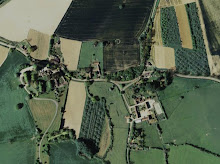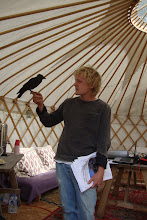
Two hours ago I took this photo of a red kite flying over the 1940s orchard! What a sign of how successful the Chilterns re-introduction program has been. Indeed, whilst I was getting a bus to Gatwick airport last week I saw over fifteen of them when we passed down through Buckinghamshire towards London. In medieval times they were common in towns and cities where they fed on carrion and waste in the streets, rather like vultures do in other countries.

My funding has stretched further than anticipated and so I was able to direct Issac into the 1940s orchard for a spare day. Here he just concentrated in doing the chainsaw work I can't do on my own, such as raising the crowns and removing any large diseased branches. I saw a few yellowhammer down by the pheasant feeder where they always seem to hang out. It's a red list species due to recent population declines that are almost certainly due to the intensification of farming methods.
.jpg)
.JPG)
We have finished pruning the 1920s orchard now and its looking pretty amazing. The main job left is getting rid of the immense volumes of prunings that we have created. The offcuts are all very green and sappy and I have been agonising over the most efficient way of dealing with them. A mobile chipper is one option, but the prunings are quite hard to handle and I think the best option may be to make several large bonfires and leave the wood to season for five months before burning it all.




.JPG)
.JPG)
.JPG)

